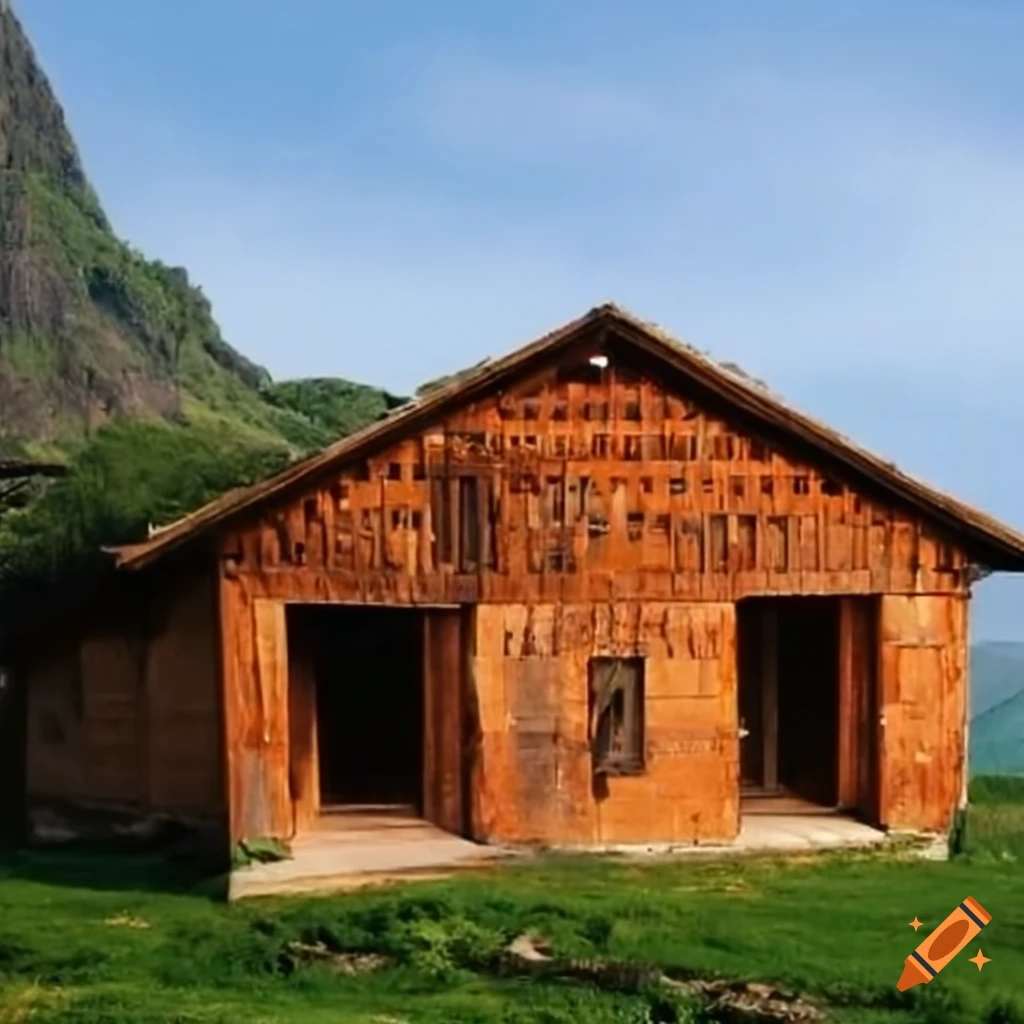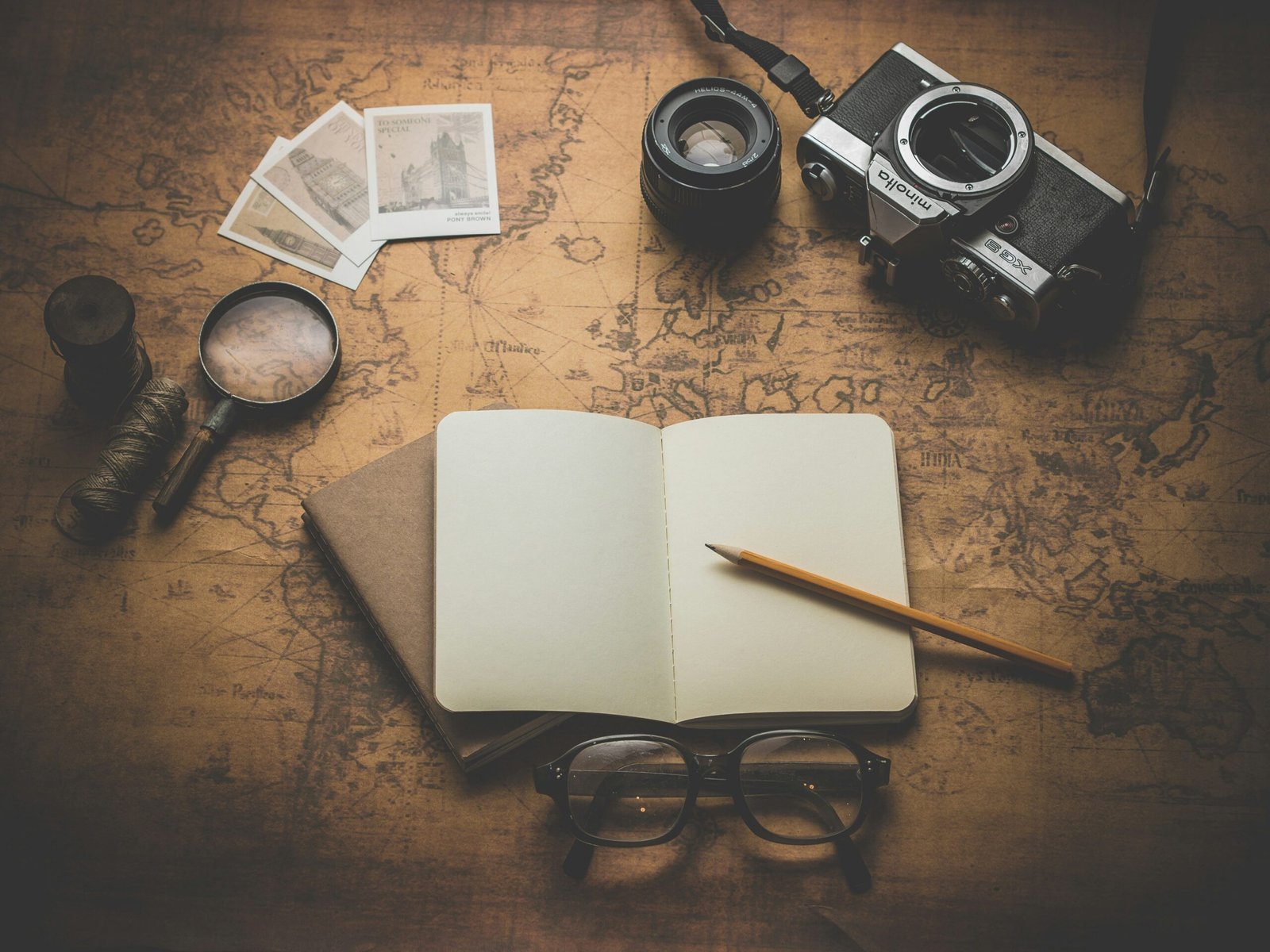Introduction to Solo Adventures
In recent years, solo adventures have seen a surge in popularity, particularly among those seeking to immerse themselves in remote locations. This form of travel offers a unique opportunity for self-discovery and personal growth. When embarking on a solo journey, individuals often find themselves able to reflect deeply, fostering a sense of independence and self-reliance that is difficult to achieve in more conventional settings.
The allure of solo travel lies in its ability to provide a respite from the demands and distractions of daily life. In an increasingly connected world, where digital noise and social obligations are ever-present, the desire to find solitude has never been more relevant. Remote locations offer a sanctuary where travelers can disconnect from their routine and reconnect with nature. The stillness and tranquility of these isolated places enable one to experience a profound connection with the environment, often leading to a greater appreciation for the natural world.
Moreover, solo adventures can be incredibly empowering. Navigating unfamiliar terrain alone challenges individuals to step out of their comfort zones, honing their problem-solving skills and resilience. This sense of accomplishment and self-sufficiency is a significant draw for many solo travelers. By relying solely on themselves, adventurers often discover newfound strengths and capabilities they were previously unaware of.
The rising trend of solo travel also reflects a broader societal shift towards valuing personal experiences over material possessions. People are increasingly prioritizing meaningful experiences that foster personal growth and well-being. The solitude found in remote locations provides a perfect backdrop for introspection and mindfulness, allowing travelers to return to their daily lives with a refreshed perspective.
As more individuals embrace the concept of solo adventures, the benefits of such journeys continue to be recognized and celebrated. From the thrill of independence to the deep connection with nature, solo travel in remote locations offers an enriching experience that is both transformative and unforgettable.
Choosing the Right Remote Location
Embarking on a solo adventure in remote locations requires careful consideration and planning to ensure a safe and enjoyable experience. Selecting the perfect remote location involves evaluating several factors such as safety, accessibility, climate, and the type of terrain. By understanding these elements, adventurers can make informed decisions and fully immerse themselves in the tranquility these secluded spots offer.
Safety is paramount when selecting a remote location. Research the political stability and crime rate of the area to avoid potential risks. It’s also crucial to check for any travel advisories issued by governmental bodies. In addition, understanding the local wildlife and natural hazards, like extreme weather conditions or difficult terrain, can help in preparing adequately.
Accessibility is another critical factor. While the allure of a remote location often lies in its isolation, it’s important to consider how you will reach and leave the destination. Assess the availability of transportation options, such as flights, boats, or off-road vehicles, and plan your route meticulously. Also, ensure that you have a reliable means of communication in case of emergencies.
Climate plays a significant role in the choice of a remote destination. The weather can greatly affect your experience, so it’s essential to choose a time of year when conditions are favorable. Whether you prefer the cool air of a mountain range, the warmth of a desert, or the temperate climate of a secluded beach, understanding seasonal weather patterns will help you pack appropriately and plan your activities.
The type of terrain you wish to explore should align with your interests and physical capabilities. Remote locations offer diverse landscapes, from rugged mountains and dense forests to expansive deserts and serene beaches. For example, the Himalayas provide breathtaking mountain vistas and challenging treks, while the Sahara Desert offers vast, tranquil expanses of sand. Coastal areas like the Faroe Islands present stunning cliffs and isolated beaches, perfect for those seeking solitude by the sea.
Popular remote destinations around the world include Patagonia in South America, known for its dramatic landscapes and hiking trails; the Australian Outback, offering a unique desert experience; and the Scottish Highlands, with its serene lochs and rolling hills. Each of these locations provides a distinct experience, allowing solo travelers to find the solitude and adventure they seek.
Preparing for a Solo Adventure
Embarking on a solo adventure to remote locations requires meticulous preparation to ensure both safety and enjoyment. One of the foremost considerations is physical fitness. Engaging in regular exercise that enhances endurance, strength, and flexibility is crucial. Activities such as hiking, swimming, and strength training can be particularly beneficial. Physical readiness not only helps in managing the demands of the terrain but also reduces the risk of injury.
Mental readiness is equally important. Solo adventures can be taxing on the mind, given the solitude and potential challenges. Building mental resilience through mindfulness practices, meditation, and stress management techniques can be invaluable. Additionally, familiarizing oneself with the psychological aspects of solitude and isolation can prepare you for the mental hurdles that may arise.
Practical skills are indispensable for solo travelers venturing into remote areas. Navigation skills, such as reading maps and using a compass, are fundamental. Being adept at using GPS devices and understanding topographical maps can significantly enhance your ability to navigate unknown terrain. Furthermore, survival techniques, including building shelters, finding and purifying water, and knowing how to start a fire, are critical in case of emergencies.
Equipping yourself with the right gear and equipment is paramount. Essential items include detailed maps of the area, a reliable compass, and a GPS device for accurate navigation. Communication devices, such as a satellite phone or a personal locator beacon, provide a vital lifeline in case of emergencies. A well-stocked first aid kit, complete with bandages, antiseptics, and basic medications, is also essential.
Other vital gear includes weather-appropriate clothing, sturdy footwear, and a durable backpack. Consider packing multi-purpose tools, a lightweight tent, and sleeping bag for overnight stays. Adequate food and water supplies, along with portable purification systems, ensure sustenance throughout the journey.
By thoroughly preparing in these areas, solo adventurers can confidently explore remote locations, embracing the solitude and challenges with the assurance of being well-equipped for the journey ahead.
Safety Tips for Solo Travelers
Traveling solo in remote locations offers a unique opportunity to find solitude and connect deeply with nature. However, it also necessitates heightened attention to safety. Ensuring your well-being while exploring these isolated areas is paramount. One of the first steps to take before embarking on your journey is informing someone trustworthy about your travel plans. Sharing your itinerary, expected return dates, and contact information can significantly increase your safety. This ensures that someone can raise the alarm if you fail to check in at predetermined times.
Equally important are the emergency procedures you should have in place. Carry a well-stocked first aid kit and familiarize yourself with basic first aid skills. Additionally, bring along essential navigation tools such as a map, compass, or GPS device. In areas with limited or no cellular coverage, consider investing in a satellite phone or a personal locator beacon (PLB). These devices can be lifesavers in emergencies, allowing you to communicate distress signals and your exact location.
When traveling in remote locations, it’s crucial to avoid potential dangers such as wildlife encounters. Educate yourself about the local fauna and understand how to minimize risks. For example, store food securely to avoid attracting animals and make noise while hiking to avoid surprising them. Carrying bear spray or other deterrents can provide an added layer of protection against wildlife threats.
Extreme weather conditions pose another significant risk. Always check weather forecasts before heading out and be prepared for sudden changes. Pack appropriate clothing and gear, including thermal layers, waterproof jackets, and sturdy footwear. It’s also wise to have an emergency shelter or bivy sack in case you need to take refuge unexpectedly.
Lastly, the risk of getting lost should not be underestimated. Stick to marked trails whenever possible and avoid venturing into unfamiliar areas without proper preparation. If you do find yourself disoriented, stop, stay calm, and try to retrace your steps. Keeping a whistle and signaling mirror in your kit can help you attract attention if you need rescue.
By staying vigilant, well-prepared, and informed about the potential hazards, you can significantly enhance your safety and ensure a rewarding solo adventure in remote locations.
Connecting with Nature
Embarking on a solo adventure in remote locations offers a unique opportunity to connect with nature on a profound level. The absence of urban distractions and the presence of untouched landscapes allow solo travelers to fully immerse themselves in the natural environment. This solitude fosters a deeper appreciation of the world around them, often leading to moments of mindfulness and personal growth.
One of the most significant benefits of solitary travel is the undisturbed time it provides to observe and engage with the natural world. Without the distractions of conversations or the constant pull of digital devices, solo adventurers can focus entirely on their surroundings. This heightened awareness often leads to a more intimate understanding of the environment, from the subtle rustle of leaves to the distant call of wildlife.
Many solo travelers find that this connection with nature brings a sense of peace and inspiration. For instance, Jane, a solo hiker who ventured into the remote forests of the Pacific Northwest, recounts how the solitude allowed her to tune into the rhythm of the forest. She describes moments where the interplay of light and shadow on the forest floor seemed almost magical, providing her with a sense of calm and clarity she rarely found in her daily life.
Similarly, Mark, who spent a month kayaking through the fjords of Norway, speaks about the awe-inspiring beauty he encountered. Alone in his kayak, surrounded by towering cliffs and serene waters, he found himself in a state of constant wonder. The isolation enabled him to reflect deeply on his life, resulting in a profound sense of personal growth and renewed perspective.
These stories highlight how solo adventures in remote locations can be transformative. The solitude not only enhances the appreciation of natural beauty but also promotes introspection and self-discovery. By connecting with nature on such a deep level, solo travelers often return from their journeys with a greater sense of inner peace and a renewed appreciation for the world around them.
Overcoming Challenges and Embracing Solitude
Embarking on solo adventures in remote locations inevitably presents a unique set of challenges. Solo travelers often grapple with feelings of loneliness, self-doubt, and various physical hardships. However, these obstacles can be mitigated with thoughtful preparation and the right mindset, transforming potential difficulties into opportunities for personal growth and development.
Loneliness is a common challenge for those venturing alone into isolated terrains. To counteract this, solo travelers can engage in mindful activities such as journaling, meditation, or photography. These activities not only fill the solitude with purpose but also foster a deeper connection with the surroundings. Another effective strategy is maintaining regular communication with family and friends through satellite phones or scheduled check-ins when connectivity allows, ensuring a sense of connection even in the remotest areas.
Self-doubt can also plague solo adventurers, particularly when faced with unforeseen circumstances. Building confidence through thorough preparation is key. This includes mastering survival skills, familiarizing oneself with the terrain, and having a well-thought-out plan for emergencies. Additionally, setting small, achievable goals can provide a sense of accomplishment and encourage perseverance.
Physical hardships are another significant aspect of solo travel in remote locations. Endurance and physical fitness are crucial, and travelers should ensure they are in good health and well-prepared for the demands of their journey. Packing appropriate gear, understanding one’s physical limits, and having a contingency plan can make a significant difference in managing physical challenges.
Embracing solitude provides profound psychological benefits. It cultivates greater self-awareness and resilience, as individuals learn to rely on their inner resources. Solitude allows for introspection, offering a chance to disconnect from the constant noise of daily life and reconnect with oneself. This process can lead to enhanced mental clarity, increased creativity, and a deeper appreciation for the natural world.
In conclusion, the challenges of solo travel in remote locations are not to be underestimated, but with the right strategies and mindset, these experiences can be deeply rewarding. Embracing solitude can lead to significant personal growth, fostering resilience and self-awareness that extend far beyond the journey itself.
Capturing and Sharing Your Experience
Documenting your solo adventures in remote locations can be a profoundly enriching experience, allowing you to capture and share your unique journey. Keeping a journal is one of the most effective ways to preserve memories. Journaling enables you to reflect on your experiences, emotions, and the landscapes you encounter. It can be as simple as jotting down daily highlights or as detailed as describing every aspect of your day. This practice not only helps in remembering your adventures but also provides a therapeutic outlet for self-expression and introspection.
Photography and videography are powerful tools for immortalizing your travels. High-quality photos and videos can convey the beauty and essence of remote locations, capturing moments that words alone might not fully express. Investing in a good camera or even using a smartphone with advanced camera features can make a significant difference. Learn basic photography techniques such as composition, lighting, and editing to enhance your visual storytelling. Similarly, short video clips or vlogs can bring your adventures to life, offering a dynamic way to share your experiences with others.
Blogging is another excellent platform for sharing your solo travel experiences. Starting a travel blog allows you to reach a broader audience, offering insights, tips, and inspiration to fellow adventurers. Write engaging posts that detail your journey, including practical information such as itineraries, gear recommendations, and survival tips. Incorporating personal anecdotes and reflections can make your blog more relatable and captivating.
Social media is a powerful tool for connecting with other solo travelers and sharing your adventures in real-time. Platforms such as Instagram, Facebook, and Twitter enable you to post updates, photos, and videos, building a community of like-minded explorers. Use relevant hashtags to increase your visibility and engage with other travelers by commenting on their posts and sharing experiences. This not only fosters a sense of camaraderie but also provides mutual support and motivation.
Connecting with other solo travelers online can be immensely beneficial. Join travel forums, Facebook groups, and other online communities dedicated to solo travel. These platforms offer a wealth of knowledge, support, and inspiration, helping you plan your next adventure and navigate any challenges you might encounter. Sharing your experiences and learning from others can enrich your solo travels, making them even more fulfilling and memorable.
Conclusion
Embarking on solo adventures in remote locations offers a unique opportunity for self-discovery, personal growth, and a deeper connection with nature. As discussed, the benefits of solo travel include enhanced self-reliance, mental clarity, and a profound sense of accomplishment. The solitude found in isolated destinations allows for introspection and a break from the constant noise of daily life. By stepping out of one’s comfort zone, solo travelers often find a renewed sense of motivation and a greater appreciation for the world around them.
It is essential to prepare adequately for these journeys, considering factors such as safety, navigation, and local culture. Equipping oneself with the right tools, knowledge, and mindset can transform a potentially daunting trip into an enriching and memorable experience. Whether trekking through remote mountains, exploring secluded forests, or navigating isolated coastlines, solo adventures can be incredibly rewarding.
FAQs
How can I stay motivated during a solo adventure?
Staying motivated can be challenging, but setting small, achievable goals and keeping a journal can help maintain focus and enthusiasm. Celebrating milestones and reflecting on the journey’s purpose can also provide a motivational boost.
How do I manage fear while traveling alone?
Fear is a natural response to unfamiliar situations. To manage it, thorough preparation and research are crucial. Carrying reliable communication devices, sharing your itinerary with someone trustworthy, and having contingency plans can alleviate anxiety. Building confidence through smaller solo trips can also help in managing fear.
What are some of the best remote destinations for solo travelers?
Some top remote destinations for solo travelers include the Scottish Highlands, the Australian Outback, Patagonia in South America, and the Faroe Islands. Each offers unique landscapes and opportunities for solitude and exploration.
We encourage you to embark on your own solo adventure, armed with the knowledge and inspiration from this blog. The rewards of such journeys are invaluable, offering a chance to reconnect with oneself and the natural world. For further reading, consider resources such as travel guides, online forums, and blogs dedicated to solo travel and remote destinations.



